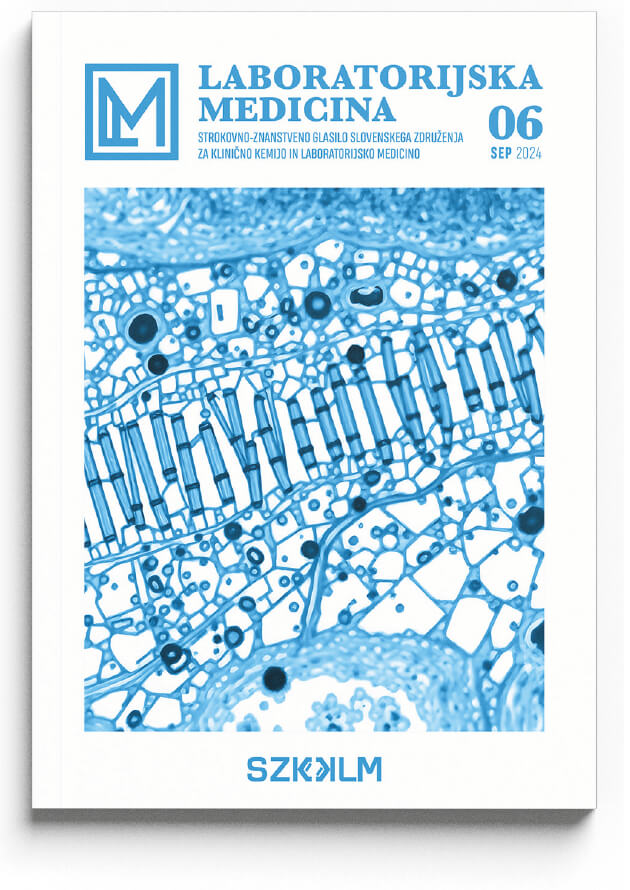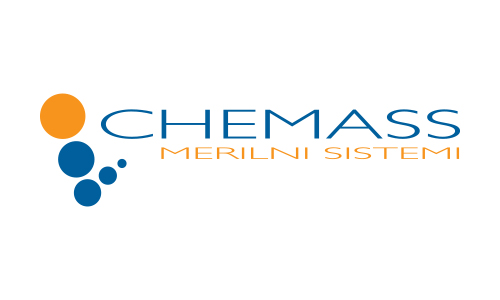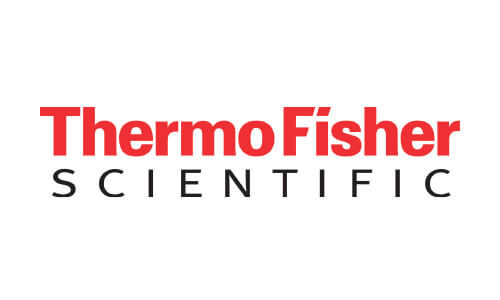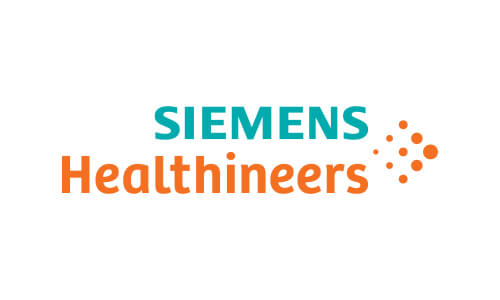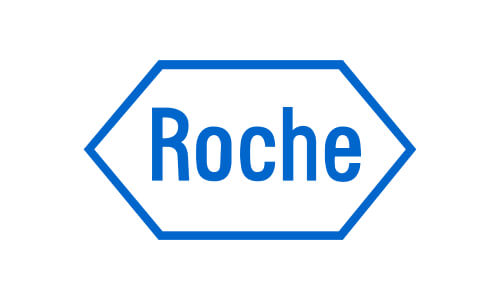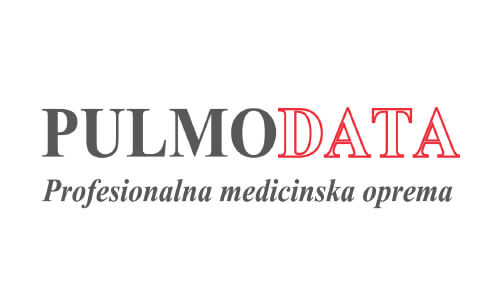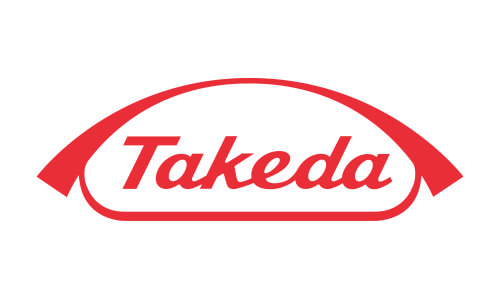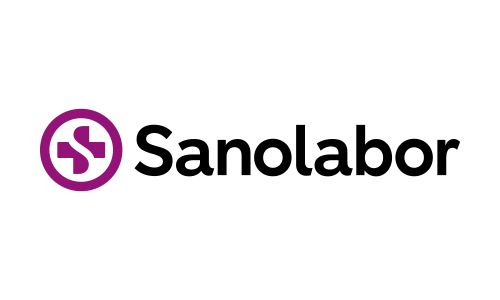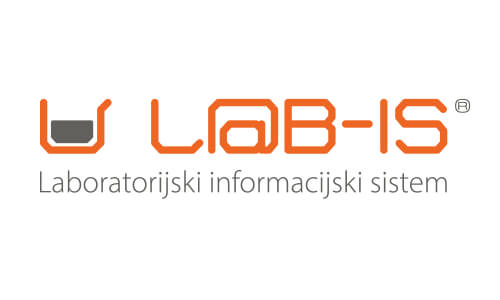INTRODUCTION
With nearly 20 million new cases and over 9 million deaths reported annually, cancer remains a pressing global problem (1). The prognosis for most cancers could be markedly enhanced through the implementation of early disease intervention, which hinges on the ability to diagnose the disease at an early stage. However, current diagnostic and monitoring strategies often fall short in terms of sensitivity, specificity, and accessibility. While traditional methods, such as imaging techniques and tissue biopsies, have proven invaluable, there are limitations to their effectiveness. They are invasive, costly, and susceptible to sampling errors. Moreover, existing biomarkers, though informative in certain contexts, may lack the necessary specificity or sensitivity for early detection or accurate monitoring of disease progression (2, 3, 4).
A biomarker can be defined as “a characteristic that is objectively measured and evaluated as an indicator of normal biological processes, pathogenic processes, or pharmacologic responses to a therapeutic intervention” (5). A cancer biomarker is considered clinically useful if it is significantly elevated compared to levels in age-matched healthy and benign controls and/or reflective of the disease progression/regression, and is present in easily obtained bodily fluids, such as serum, plasma, and urine (6, 7). The characteristics of an ideal biomarker are largely dependent on its intended use. For screening purposes, the biomarker should be highly specific, reference values should be well known, it should be cost-effective, and there should be implications for therapeutic or lifestyle interventions. Conversely, a diagnostic biomarker should be highly sensitive, costeffective, have therapeutic implications, and elucidate the molecular pathogenesis of the disease. Finally, an ideal biomarker for prognosis and treatment monitoring should be highly specific, with low intra-individual variability, it should respond to therapy, be predictive of treatment effectiveness, and add to already known prognostic indicators or models (8). The majority of cancer biomarkers currently used in clinical practice lack the necessary performance characteristics to be of diagnostic value. Consequently, the diagnostic use of biomarkers depends largely on emerging clinical symptoms, family history, or genetic susceptibility. The development of cancerspecific biomarkers that are easily accessible and sensitive is required to improve screening, early diagnosis, monitoring, and prediction of disease progression and treatment (6, 7, 9).
In recent years, there has been a growing interest in utilizing cancer-specific glycosylation patterns as diagnostic and prognostic biomarkers. These distinct glycan signatures have the potential to facilitate early detection, enable the development of personalized treatment strategies, and facilitate the assessment of disease progression (10). This article provides an overview of glycosylation changes in cancer, emphasizing their potential as diagnostic tools, with a particular focus on the europium-doped nanoparticle-based glycovariant (EuNP-based GV) assays for the detection of glycosylated cancer biomarkers.
GLYCOSYLATION
Glycans are saccharide chains, which can either be free or in the form of glycoconjugates. As glycoconjugates, they are attached to lipids or proteins. This attachment of sugars to proteins or lipids occurs during a posttranslational process known as glycosylation, which occurs in the endoplasmic reticulum and Golgi apparatus (11). The process is done in several steps, which depend on substrate and enzyme availability (11, 12). Glycosylation begins with the determination of proteins to be glycosylated and the transfer of the monosaccharide to an amino acid. This is a part of the initiation step, which occurs in the endoplasmic reticulum. The exceptions to this are two Oglycosylations, N-acetylgalactosamine-type and Xylitol-type, which are initiated in the Golgi apparatus, and O-linked-N-acetylglucosaminylation, which occurs in the cytosol and nucleus. The initiation step is followed by glycotransferases further adding monosaccharides to growing oligosaccharide chains, resulting in core extension, elongation, and branching, as well as the final capping of glycans (12).
Most of the membrane and secreted proteins are glycosylated. Their variety and abundance directly reflect their importance and many functions. Their roles can be divided into three general categories: structural and modulatory properties, specific recognition by other molecules, and the molecular mimicry of host glycans. The first category consists of structural and modulatory properties, which include protective, stabilizing, organizational, and barrier functions. For example, glycocalyx acts as a physical barrier, shielding cellular contents from proteolytic recognition, antibody binding, and microbial attachment. Glycosylation also modulates protein interactions and protects important molecules by binding them to glycosaminoglycan chains within the extracellular matrix, preventing the diffusion of factors away from the site and prolonging their active lives. The second category is specific recognition, which involves intrinsic interactions between glycans and glycan-binding proteins on cell surfaces. These interactions are crucial for cell-cell and cell-matrix interactions. An example is selectins, which recognize glycans on ligands to mediate the binding of blood and vascular cells in various situations. Finally, the third category, molecular mimicry of host glycans, refers to glycans that are specifically bound by various viruses, bacteria, and parasites, and glycans, targeted by toxins. These glycans play numerous roles. For example, some organisms can mask or modify glycans typically recognized by microorganisms or toxins, thus preventing their binding or damage (13).
Glycosylation changes in cancer
In the context of tumor progression, several glycan aberrations have been identified as pivotal pathophysiological events. These include the loss or overproduction of some glycans, the increased production of truncated glycans, and the synthesis of novel glycans (14, 15, 16). Such alterations stem from two main mechanisms: incomplete synthesis and neo-synthesis. Incomplete synthesis often occurs in early cancer stages, where normal synthesis of complex glycans is impaired, resulting in the biosynthesis of truncated structures. On the other hand, neo-synthesis is more prevalent in advanced cancers, where cancer cells acquire genes involved in glycan biosynthesis, leading to abnormal glycosylation patterns (10). These changes in the glycosylation pathway may occur in the expression of specific glycotransferases, glycosidases, molecular chaperones, or lysosomal hydrolases. Another possibility is the mislocalization of the glycosyltransferases or a change in their nature. Glycosylation changes may also occur due to altered availability of protein substrates or nucleotide sugars and 3-phosphoadenosine-5-phosphosulfate, activity of nucleotide sugar and monosaccharide transporters, glycoprotein turnover kinetics, and pH of endoplasmic reticulum and Golgi apparatus (17).
Glycosylation aberrations that frequently occur in cancer include an increase in sialyl-Lewis structures, abnormal core fucosylation, increased sialylation, elevated N-glycan branching or exposure of the mucin-type O-glycan, and formation of Thomsen-Friedenreich (T) and Thomsennouveau (Tn) antigens. These changes play a role in many oncogenic processes, such as evasion of cell division checkpoints, evasion of death signals and immune surveillance, and migration to metastatic sites (10, 16, 18). Cancer-associated glycans are shown in Figure 1.
Slika 1:
Slika 1: Z rakom povezani glikani. Na sliki so prikazani glikani, pogosto prisotni pri rakavih obolenjih. N-acetilglukozamin (GlcNAc), manoza (Man), galaktoza (Gal), N-acetilneuraminska kislina (Neu5Ac), asparagin (Asn), serin (Ser), treonin (Thr). Slika je bila pripravljena s spletnim orodjem BioRender.com.
Figure 1: Cancer-associated glycans. The figure shows glycans commonly found in cancers. N-acetylglucosamine (GlcNAc), Mannose (Man), Galactose (Gal), N-Acetylneuraminic Acid (Neu5Ac), Asparagine (Asn), Serine (Ser), Threonine (Thr). Created with BioRender.com.

Glycosylation of extracellular vesicles
Extracellular vesicles (EVs), membranous particles with a size range of 40 to 1000 nm, enclosed by a phospholipid bilayer, are secreted by various cells and represent a potential analyte for diagnosis and treatment monitoring of cancer (19, 20). EVs carry clinically relevant information, as they reflect the cell condition from which they originate. Furthermore, their production is increased in proportion to tumor size and growth rate (7). Moreover, since they can be found in bodily fluids like urine, plasma, and saliva, they can be obtained non-invasively (19). Similarly to free cancer-specific glycoproteins, EVs also present a unique set of glycan epitopes on their membrane (7).
Cancer-derived EVs have been found to display a tumor-associated glycocalyx, which could serve as crucial markers for the detection and isolation of EVs, and notably, for malignant and nonmalignant distinction. These changes have been observed in the early stages of the disease, indicating a potential use for early diagnosis (7, 21). Some of the reported glycocalyx aberrations include high-mannose and complex type N-glycans, polylactosamine, and sialylated glycans, specifically α2,6linked sialic acids (21).
CANCER-SPECIFIC GLYCOSYLATION BIOMARKERS
Glycosylation changes in cancer have long been considered a hallmark of cancer and most of the currently recognized and used cancer biomarkers are glycoproteins. However, they are normally monitored for their total protein level. Currently, only two glycosylated biomarkers, alpha fetoprotein-L3 and cancer antigen 19-9 (CA19-9), are defined by their glycan moiety in clinical practice. The discovery and recognition of cancer-specific GVs could improve the specificity of these cancer biomarkers (2, 10, 16, 22, 23). The most commonly employed glycoproteins used as cancer biomarkers are listed in Table 1, along with reported glycan alterations and the potential utility of glycan-specific detection. Some promising glycan targets, which are not yet in clinical use, are also listed.
Table 1:
Table 1: Glycoproteins as cancer biomarkers. Some of the most used glycoprotein cancer biomarkers and some potential new cancer biomarkers, glycosylation alterations reported in cancer, and the potential of glycovariant detection.
Tabela 1: Glikoproteini kot onkološki biomarkerji. Najpogostejši glikoproteini, ki se uporabljajo kot onkološki biomarkerji v praksi, in nekateri potencialni novi biomarkerji, za raka specifične spremembe v glikolizaciji in potencialna uporaba glikovariant.
Europium-doped nanoparticles-based glycovariant assay
Several advanced techniques are used to analyze glycoproteins to target glycan alterations in cancer, each with distinct advantages and limitations. Detailed glycoprotein characterization methods, such as high-performance liquid chromatography, mass spectrometry, and nuclear magnetic resonance spectroscopy, provide high sensitivity and specificity for detailed structural and quantitative analysis but require complex preparation, skilled personnel, expensive equipment, and a lot of time. Thus these methods, while useful for novel biomarker discovery, are not suitable for routine clinical use (25, 26, 27). To this end, a range of lectin-based assays has been developed, including microarrays, enzyme-linked lectin assays, lectin immunosorbent assays, and affinity chromatography. Their key advantage is the ability to differentiate between various glycan structures without the removal of the sugar component from glycoproteins or the addition of fluorescent labels. Although these methods show promise for the detection of cancer glycoproteins because of their simplicity and suitability for high-throughput screening, they exhibit several disadvantages, such as the need to deglycosylate antibodies used for capture or detection, and lower sensitivity and specificity due to the binding of lectins to glycans expressed by unrelated proteins (25, 27).
The EuNP-based GV assay is a sandwich-like immunoassay. In this assay, immobilized capture antibodies recognize and bind the protein moiety of the analyte, while lectins or glycan-specific antibodies coated on EuNPs recognize and bind the cancer-specific glycan moiety. The amount of glycoprotein is then measured as time-resolved fluorescence (28). This principle is shown in Figure 2.
Slika 2:
Slika 2: Analiza glikovariant s pomočjo z evropijem polnjenih nanodelcev. Pri tej metodi imobilizirana protitelesa prepoznajo in vežejo beljakovinski del analita, medtem ko lektini ali za glikane specifična protitelesa, vezana na zunanjosti nanodelcev, prepoznajo in vežejo za raka specifični glikanski del. Količina glikoproteina se nato izmeri kot fluorescenca s časovnim zamikom. : Slika je bila pripravljena s spletnim orodjem BioRender.com.
Figure 2: Europium-doped nanoparticle-based glycovariant assay. In this assay, immobilized capture antibodies recognize and bind the protein moiety of the analyte, while lectins or glycanspecific antibodies coated on nanoparticles recognize and bind the cancer-specific glycan moiety. The amount of glycoprotein is then measured as time-resolved fluorescence. Created with BioRender.com.

The use of different capture and tracer (captured glycoproteintracer) combinations in EuNP-based GV assays has shown promise for the specific detection of cancer-associated glycovariants across multiple cancer types, including prostate, breast, colorectal, and bladder (28, 29, 30, 31, 32, 33, 34, 35, 36, 37, 38). Furthermore, this method has shown potential for the detection of glycosylation changes on the surface of EVs. It has been proposed that cancer-specific EVs could be effectively characterized using capture antibodies and EuNP-linked lectins and antibodies targeting specific proteins or glycan structures known to be present on the EV surface, such as tetraspanins (e.g., CD9, CD63, CD81) and integrins (20, 39, 40, 41).
COMPONENTS OF THE EUROPIUMDOPED NANOPARTICLESBASED GLYCOVARIANT ASSAY
The performance of the EuNP-based glycovariant assay hinges on several essential equipment components and materials. Firstly, the assay requires the use of fluorescent NPs, specifically (Eu³+)-chelate-doped NPs, which exhibit time-resolved fluorescence. Consequently, a time-resolved fluorescence microplate reader is required to measure the signal produced. Secondly, lectins or glycan-specific antibodies must be coated on the aforementioned NPs so that they can bind to the glycan moiety of the target glycoprotein. Thirdly, biotinylated capture antibodies must be immobilized on a streptavidin-coated low-fluorescence microtitration plate in order to bind the protein moiety of the target glycoprotein. Additionally, some basic materials, such as wash and assay buffers, are required to maintain proper conditions during the assay. Lastly, conventional laboratory equipment, such as plate shakers for incubation and centrifuges for sample preparation, is needed (28, 29, 32, 35, 43).
Lectins
Lectins are proteins of nonimmune origin that specifically recognize and reversibly bind glycans without changing their structure (15, 44). They can form bonds with monosaccharides, oligosaccharides, and sugar residues in complex molecules. The carbohydrate-lectin interaction depends on many factors, such as lectin valence, the structure of binding sites, and their spatial arrangement (44).
As an analytical tool, the most important aspect of lectins is their specificity. This characteristic is determined by carbohydrate residues in glycans (44, 45). Each lectin exhibits a specific affinity for a particular carbohydrate structure (45). Carbohydrate residues may be located either at the terminus of a carbohydrate chain or within the chain itself. Some lectins can recognize and bind terminal residues, while others can bind those within a chain. Lectins are often specific to the definite anomeric form of carbohydrate molecules (α- or β-anomer) and they differentiate between sequences of carbohydrate residues (44).
Another crucial aspect of lectins’ analytical utility is their affinity for the analyte. Unlike antibodies, which exhibit high affinity with dissociation constants in the range of 10−8 to 10−12 M, lectins typically have lower affinity, with dissociation constants ranging between 10−4 and 10−7 M. However, when lectins interact with polysaccharides through polyvalent interactions, their affinities can be comparable to those observed in immune reactions (38, 44).
Glycan-binding antibodies
Antibodies possess diverse structures, enabling them to bind specifically and with high affinity to a wide range of targets. However, their effectiveness in detecting carbohydrates is limited compared to proteins due to various factors, such as the less T-cell dependent nature of anti-glycan immune responses and the preference for larger, non-carbohydrate portions of biomolecules. Despite these challenges, efforts have been made to develop anti-glycan antibodies against various targets including cancer epitopes, such as the monoclonal anti-Sialyl-Tn (anti-STn) antibody. However, the process of generating these antibodies is often tedious due to the lack of accessibility of pure glycans. The antibodies themselves can also suffer from issues such as specificity and affinity (46).
Europium-doped nanoparticles
Polystyrene NPs, employed as labels in the EuNP-based GV assay, have a diameter of 107 nm and contain approximately 30 000 chelated Eu+3 ions per particle. Due to the high concentration of Eu+3 chelates in each NP, the signal is amplified by a factor of 30 000 compared to a single Eu+3 chelate. The coupling of several antibodies or lectins on the surface of a single NP enables the creation of a high density of binding sites on the surface of NPs, thereby increasing their avidity. The combination of high avidity and signal amplification significantly enhances the sensitivity of the assay (6, 47).
Time-resolved fluorescence
Fluorescence is a phenomenon whereby a fluorophore, a molecule with the capacity to fluoresce, absorbs electromagnetic radiation, typically from ultraviolet or visible light, and subsequently emits a photon of lower energy, which implies a smaller frequency and a longer wavelength. The distinction between the absorbed and emitted energy is referred to as the Stokes shift (48). Fluorometric measurement presents certain challenges, including autofluorescence and nonspecific fluorescence, which can result in decreased sensitivity (49).
Lanthanides, such as Eu, and their chelates, exhibit distinctive fluorescent properties, including long fluorescence decay times (up to over 2 ms when in a complex), sharp emission peaks, and large Stokes shifts (50, 51). These properties render them an optimal label for detection with timeresolved fluorescence. The application of time-resolved fluorescence measurement has been shown to reduce the background interference of biological matrix fluorescence and to improve the sensitivity of such assays (51).
Samples
The sensitivity of the EuNP-based GV assay allows for its performance on small sample volumes (a few microliters), which is an advantage over traditional enzyme-linked immunosorbent assays (52). The types of samples required for these assays are typically bodily fluids in which cancer markers are present. Commonly used samples include serum, plasma, and more specialized fluids such as ovarian cyst fluid, placental homogenate, and ascites fluid (28, 32, 34, 36, 52, 53). The choice of sample depends on the specific cancer being investigated (52).
Ovarian cancer
Ovarian cancer is one of the most prevalent gynecological cancers, with over 300 000 reported new cases worldwide according to Globocan 2022 statistics (1). The primary challenge associated with this cancer is a high mortality rate, which is largely attributable to late-stage diagnosis in the majority of cases. Currently, diagnosis is based on serum cancer antigen 125 (CA125) concentration in symptomatic women. If values are elevated, an ultrasound of the abdomen and pelvis is used to confirm the diagnosis (54).
CA125 is a membrane-bound mucin – a highly O-glycosylated glycoprotein. O-glycans account for over 50% of its mass. The high amounts of glycosylation are due to tandem repeats with high amounts of serines and threonines creating many glycosylation sites, which leads to many subspecies. As a serum biomarker, it is typically employed for the diagnosis and monitoring of epithelial ovarian cancer. However, elevated concentrations have been observed in several other conditions, including endometriosis, liver disease, ovarian cysts, pregnancy, ovulatory cycles, heart failure, and some other malignant conditions (55). The biomarker’s extensive glycosylation suggests the potential for increased specificity if cancer-specific glycovariants can be distinguished. Elevated concentrations of core-fucosylated biantennary monosialylated glycans in serum samples of cancer patients have been reported. In contrast, levels of mostly bisecting biantennary and non-fucosylated glycans have been found to be decreased. Furthermore, a prevalence of high-mannose type and complex type Nglycan structures has been observed. In addition, O-glycans in ovarian cancer cell lines, such as OVCAR3, are predominantly composed of core 1 and 2 type glycans with branched core 1 antennae (56, 57).
Europium-doped nanoparticles-based glycovariant assay in ovarian cancer
The EuNP-based GV assay was used to identify lectins that can discriminate between CA125 from epithelial ovarian cancer and non-cancer sources. It was found that macrophage galactosetype lectin (MGL)-coated EuNPs specifically bind to the CA125 isoform produced by cancer cells. In addition, the detection of CA125 from non-malignant sources was reduced compared to the conventional immunoassay (58). Similar observations were made with anti-STn monoclonal antibodies coated on Eu+3-doped NPs, which efficiently recognized the epithelial ovarian cancerassociated CA125 isoform produced by OVCAR-3. The assay also detected this CA125 GV in serum with a sensitivity of 73.3%, while 95% of endometriosis cases remained undetected (59). The performance of the CA125STn assay is particularly impressive at high specificity (90% or greater), with improvements of 10.6% and 8.9% over conventional CA125 immunoassay with and without borderline cases. An even more dramatic improvement was seen in postmenopausal cases, with 17.2% higher detection at 90% specificity compared to the conventional immunoassay (60).
Both MGL and anti-STn coated NPs were also evaluated as a potential tool in the differential diagnosis of pelvic masses in a larger sample cohort; 549 patients with epithelial ovarian cancer, benign ovarian tumors, and endometriosis. Both GV assays demonstrated superior area under the ROC curve (AUC) and lower false positive rates compared to the conventional CA125 immunoassay. The sensitivity of the CA125STn assay was significantly better than the conventional immunoassay, with 85% vs. 74% sensitivity at 90% specificity (61). Both GVs were also studied to determine their potential for monitoring treatment and follow-up in high-grade serous ovarian cancer. The study showed promising results for the CA125STn assay in differentiating between low and high tumor burden. Patients with complete cytoreduction were found to have significantly lower STn glycoprotein levels at diagnosis than those with suboptimal cytoreduction. In contrast, patients with suboptimal cytoreduction could not be differentiated using the conventional CA125 immunoassay. The nadir value of CA125STn was predictive of the patients’ progression-free survival. The CA125STn test improved the detection of disease recurrence, showing a higher biomarker increase in 80.0% of patients and an earlier increase in 37.0% of patients (62).
While CA125STn appears to be the most promising combination to date, other EuNP-based GV assays have also shown some potential in discriminating epithelial ovarian cancer, such as CA153STn, CA15-3Tn, integrin α3STn, and CD63STn (39, 60).
PROSTATE CANCER
With about 1.5 million newly reported cases in 2022, prostate cancer ranks as the most common cancer in males worldwide (1). The most commonly used biomarker and one of the oldest biomarkers assisting in prostate cancer diagnosis is the serum prostate-specific antigen (PSA). PSA is a kallikrein glycoprotein with a single N-oligosaccharide chain attached to Asn-54 produced by prostate epithelial cells (63, 64). An elevation in serum PSA levels is typically indicative of disruption to the prostate basement membrane, which is normally caused by cancer cells. However, it can also be caused by benign prostatic hyperplasia (BPH), prostatitis, or manipulation of the prostate. A lack of specificity frequently results in the overdiagnosis of patients and the administration of unnecessary treatments (63, 65). A significant proportion of PSA’s mass is constituted by heavy O-glycosylation. Studies have reported alterations in glycosylation patterns, including increased core fucosylation and sialylation, in prostate cancer. Detection of these aberrant glycovariants could improve discrimination between malignant and benign conditions (66).
Europium-doped nanoparticles-based glycovariant assay in prostate cancer
The EuNP-based GV assay was employed to specifically identify fucosylated PSA. The glycan moiety was bound by Aleuria aurantia lectin as a proof-of-concept study on a small cohort of 36 tissue samples (11 benign and 25 cancerous) and 42 urine samples (16 cancerous, 15 BPH, and 11 young males). The findings revealed a markedly elevated PSA fucosylation level in malignant tissue in comparison to benign tissue. In urine samples, the EuNP-based GV assay demonstrated superior discrimination between the three groups compared to total PSA and free PSA concentrations in urine. However, the promising results observed in urine samples did not translate into serum and plasma samples due to the high variability of the LNCaP cell line PSA standard recovery and high background signal. EVs may also represent a promising target for the GV assay. Higher integrin ɑ3 levels were observed in more aggressive prostate cancer-derived cell lines, whereas less aggressive cell lines exhibited higher epithelial cell adhesion molecule levels (40). A further investigation into the potential of lectins for cancer biomarker detection has been conducted, with five lectins identified as having the greatest promise for detection in serum and plasma. These include mannose-binding lectin, Trichosanthes japonica agglutinin II, Wheat Germ Agglutinin (WGA), Wisteria floribunda lectin and MGL (6).
BREAST CANCER
Breast cancer is the most common cancer in women, with over 2 million reported new cases in 2022 (1). Cancer antigen 15-3 (CA15-3) is normally expressed in secretory epithelial cells at the apical plasma membrane. Elevated CA15-3 is observed in the majority of breast cancer patients. Elevation of the mucin also occurs in different types of advanced adenocarcinoma, such as pancreatic, gastric, and lung adenocarcinoma (67). Alterations in the glycosylation pattern of CA15-3 have been observed in breast cancer, including the presence of core 1-based Oglycosylation in place of the normal core 2-based O-glycosylation, Tn and T-sialylation, and 3Osulfated or 3-sialylated core 1 and extended core 1 (68).
Europium-doped nanoparticles-based glycovariant assay in breast cancer
CA15-3 was glycoprofiled with 28 lectins to identify those that recognize the carbohydrate structural changes associated with breast cancer. The most promising tracers were MGL and WGAdoped NPs, with clinical sensitivities of 67.9% and 81.1%, respectively, and specificities of 90%. In comparison, the conventional CA15-3 assay demonstrated a sensitivity of 66.0% at 90% specificity (68). In a subsequent study, the CA15-3WGA assay was again identified as a promising assay for breast cancer detection, in conjunction with the CA125WGA assay and the CD63 immunoassay. Significant differences were observed between the case and control groups for the CA125WGA, CA15-3WGA, and CD63 immunoassay measurements. Furthermore, significant improvements were reported in the AUCs of the new GV assays, particularly in combination with CD63 immunoassay, as compared to the conventional immunoassay (41).
COLORECTAL CANCER
Colorectal cancer is the third most common cancer worldwide, with over a million reported new cases in 2022 (1). Screening programs that identify precancerous polyps or diagnose colorectal cancer using colonoscopy tend to be successful for the 80% of colorectal cancers that develop from these polyps (69). Biomarkers can prove particularly useful in monitoring colorectal cancer treatment. Currently, the most widely used biomarker for this purpose is carcinoembryonic antigen (CEA). However, high concentrations of CEA also appear in benign conditions such as hepatitis, pancreatitis, inflammatory bowel disease, and Crohn’s disease. Other biomarkers can assist with diagnosis, postoperative follow-up, and treatment monitoring. These include CA19-9, CA125, cancer antigen 72-4 (CA72-4), and tumor-associated glycoprotein 72 (TAG 72) (40, 50). Several glycosylation processes occur during malignant transformation in colorectal cancer, including increased branching of N-glycans, higher density of O-glycans, incomplete glycan synthesis, glycan neo-synthesis, increased sialylation, and increased fucosylation (69).
Europium-doped nanoparticles-based glycovariant assay in colorectal cancer
A small cohort of 22 colorectal cancer patients was evaluated, comprising 11 early-stage (I–II) and 11 late-stage (III–IV) cases. CA125WGA, CA19-9Ma696, and CA19-9Con-A assays demonstrated high sensitivity and specificity in detecting late-stage samples, whereas the CD151CD63 assay exhibited limited performance in recognizing early-stage colorectal cancer. CA125WGA identified 11 out of 22 colorectal cancers, CA19-9Ma695 recognized 9 out of 22 colorectal cancers, CA19-9Con-A detected 11 out of 22 colorectal cancers, and CD151CD63 assay detected 8 out of 11 early-stage colorectal samples. A combination of all three assays may be useful for the post-treatment follow-up, for the detection of early relapse, and for the screening of colorectal cancer. However, a larger sample cohort is necessary for the evaluation of the assays (42).
BLADDER CANCER
Bladder cancer is the second most common urological cancer, with over 6 hundred thousand new cases reported in 2022 (1). The current diagnostic approach for bladder cancer is based on cystoscopy and urine cytology. While cystoscopy is an invasive and expensive procedure, cytology lacks sensitivity to low-grade tumors, necessitating the development of a targeted, less invasive, more sensitive, and highly specific approach for bladder cancer diagnosis (70).
Europium-doped nanoparticles-based glycovariant assay in bladder cancer
One potential avenue for improving the diagnosis process is the utilization of Ulex europaeus agglutinin-I (UEA-I)-coated NPs in a GV integrin α3UEA-I assay. The assay was conducted on a limited cohort of urine samples, comprising 13 patients with bladder cancer and 9 patients with BPH. The assay demonstrated encouraging outcomes, with a statistically significant differentiation between cancer and benign samples. However, further research is necessary (20).
CONCLUSION
In conclusion, cancer remains a major global health problem and early diagnosis is crucial for improving survival rates. Current diagnostic methods have limitations, and there is a need for easily accessible and sensitive cancer biomarkers. Glycosylation patterns have shown promise as diagnostic and prognostic biomarkers, and the EuNP-based GV assay has demonstrated potential in detecting glycosylated cancer biomarkers. However, further research and development are needed to validate these biomarkers and improve their sensitivity and specificity.


